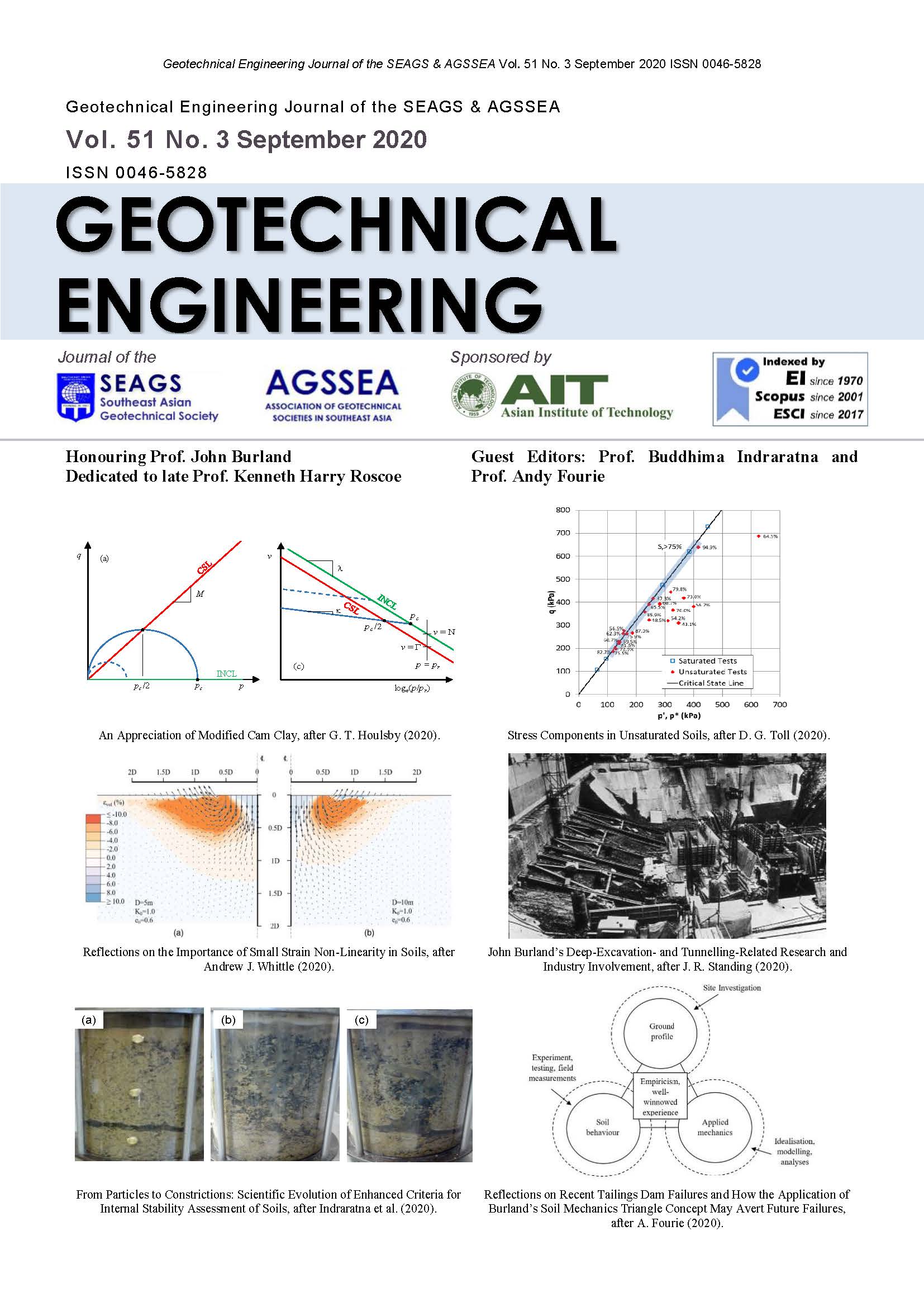From Particles to Constrictions: Scientific Evolution of Enhanced Criteria for Internal Stability Assessment of Soils
Main Article Content
Abstract
Internal instability occurs when steady seepage forces erode the finer fractions from non-uniform soils along pre-existing openings such as cracks in cohesive soils and voids in non-cohesive soil to induce permanent changes in the original particle size distribution. Given that the drainage characteristics of soils are significantly influenced by the shape, packing arrangement, compaction, and size distribution of their particles, even limited erosion can markedly alter their drainage characteristics. The geometrical assessment of internal instability potential is normally conducted using classical filter retention criterion based on mere particle size distribution and without giving due consideration to the above factors. These methods would determine the risk of instability by approximating the soil’s constrictions based on its particle size distribution; these constrictions are pore channels connecting neighbouring void spaces that would control both permeability and retention phenomena. However, recent advances in mathematical computations have facilitated the exact delineation of constriction sizes and the introduction of more accurate constriction based methods. This study purports to shed light on the scientific evolution of particle and constriction based methods over the past four decades, including the enhanced accuracy, reduced bias, and robustness associated with the latter. An interesting case study from our experience of using these approaches for a permeable barrier design at Bomaderry, NSW (Australia) for subsurface flow treatment is presented, and recommendations for their use by practicing engineers are made to conclude this study.
Article Details

This work is licensed under a Creative Commons Attribution-NonCommercial-NoDerivatives 4.0 International License.
Copyright © 2019 Association of Geotechnical Societies in Southeast Asia (AGSSEA) - Southeast Asian Geotechnical Society (SEAGS).


